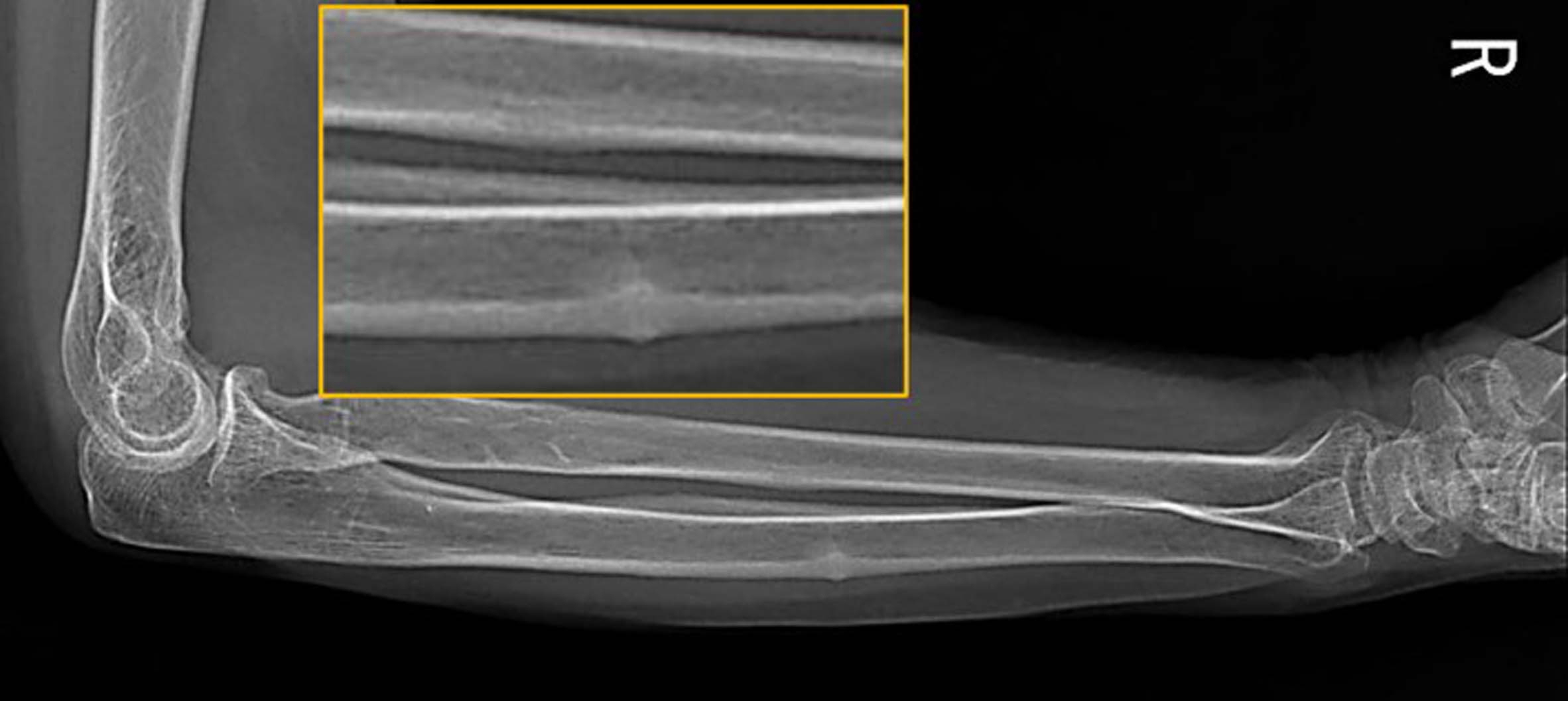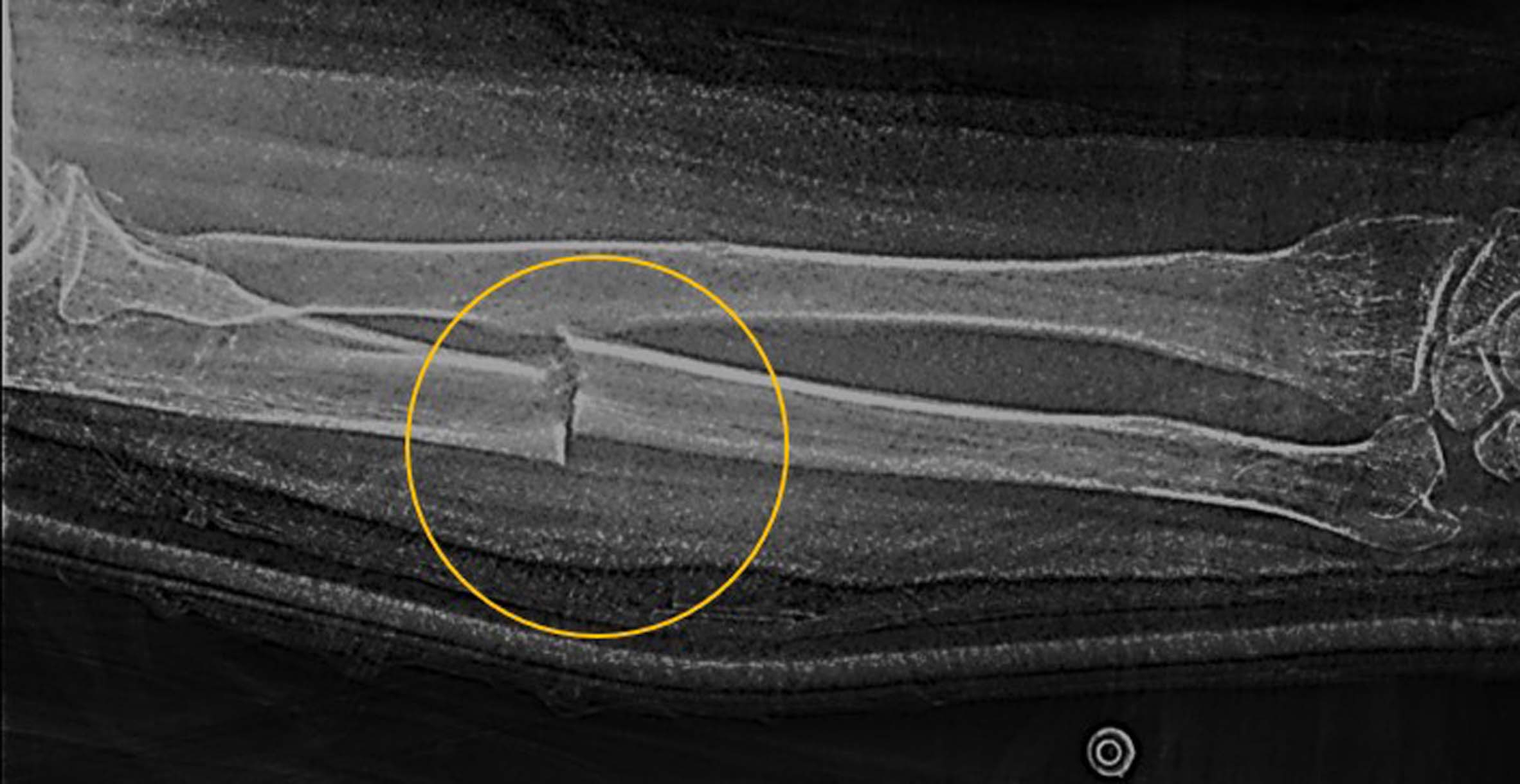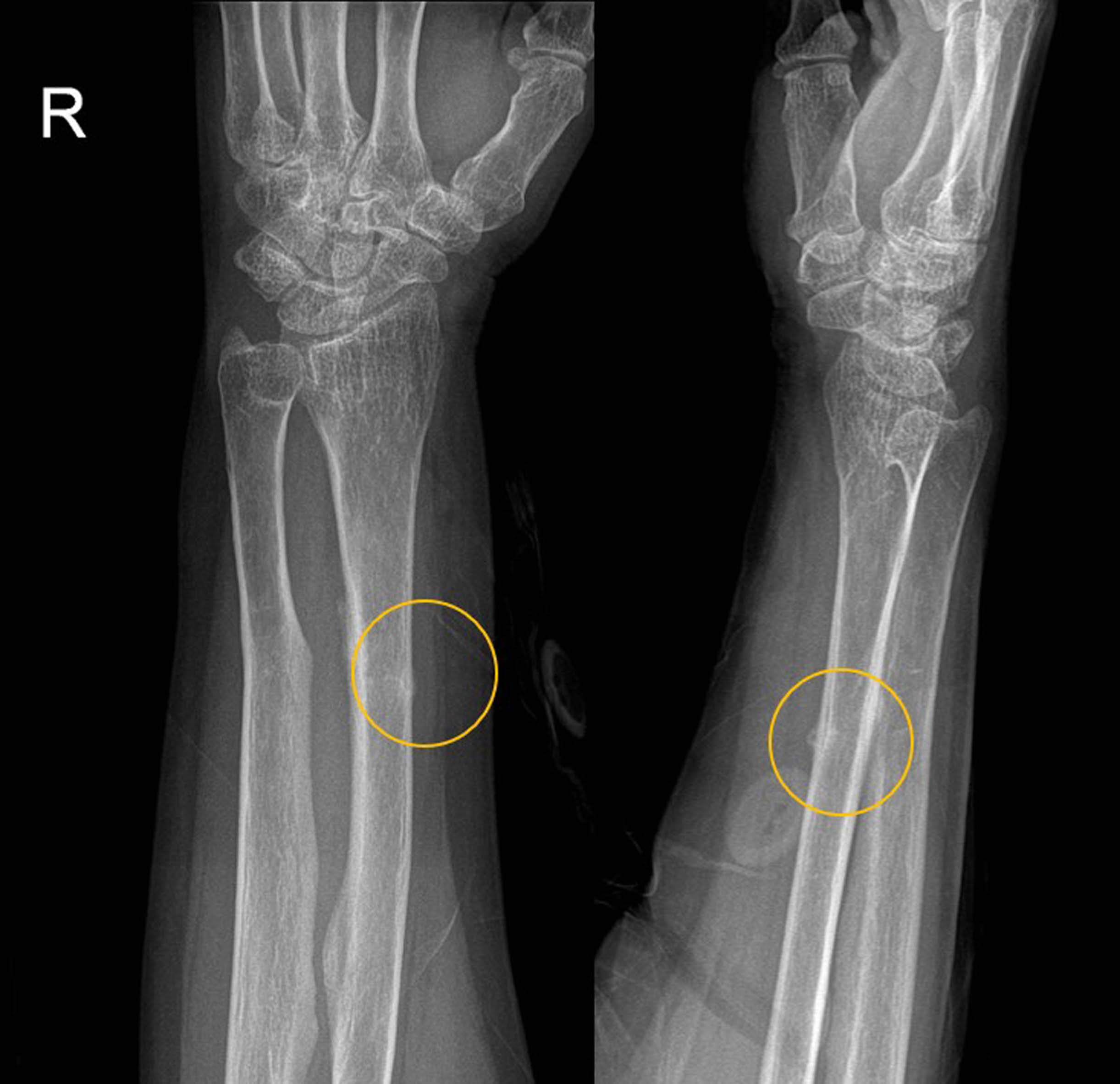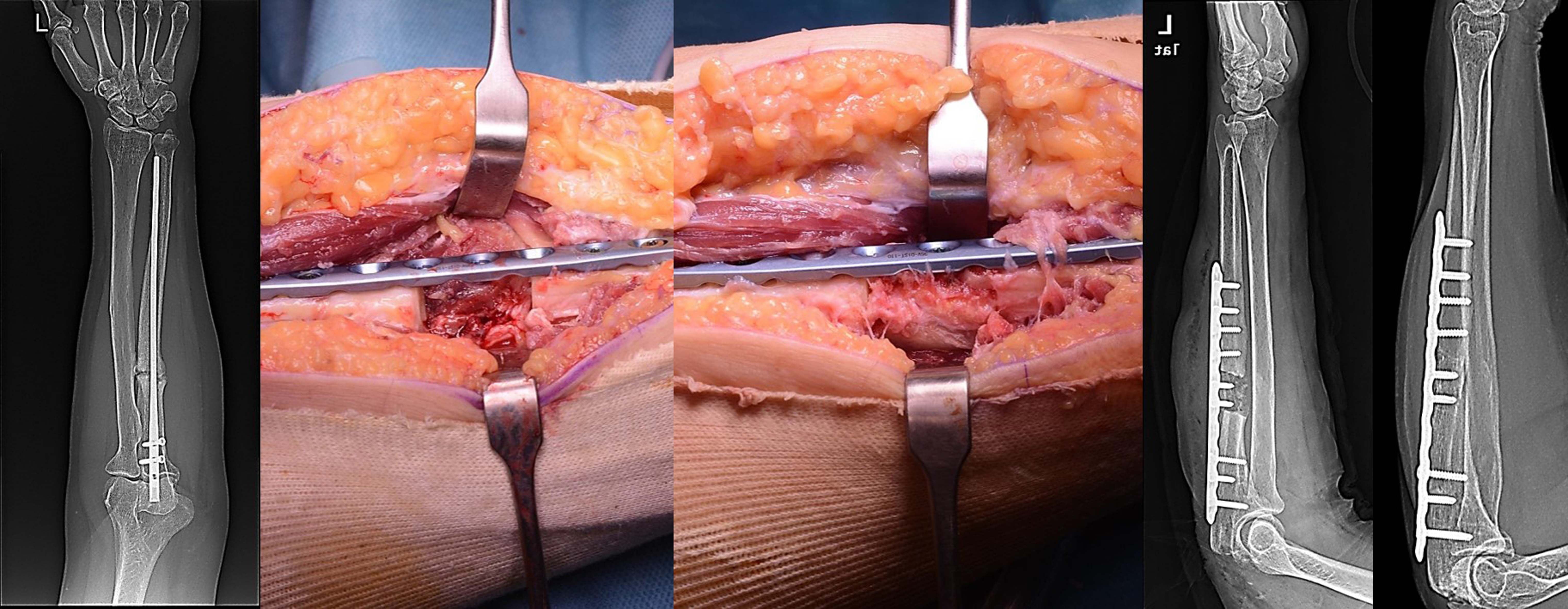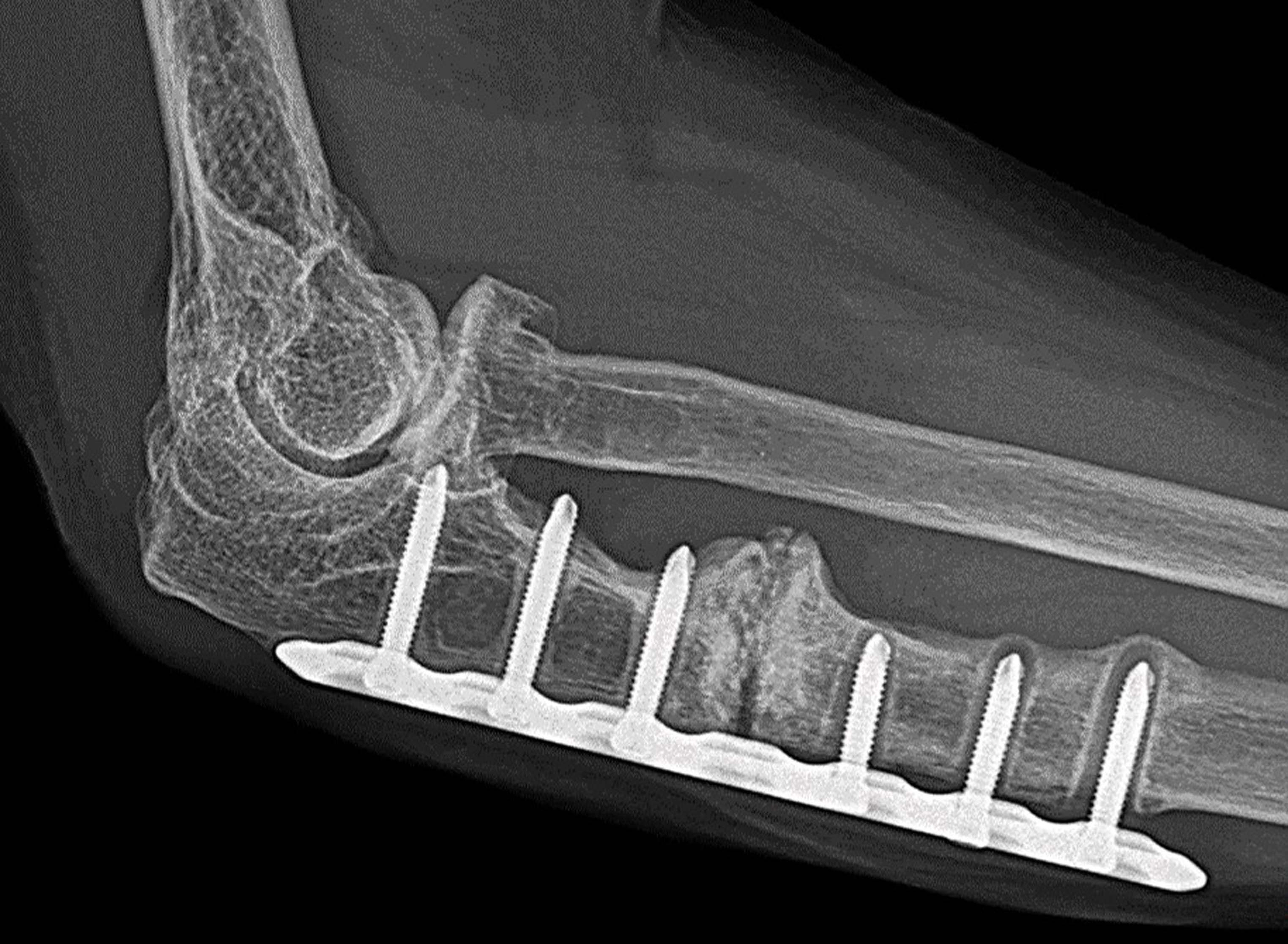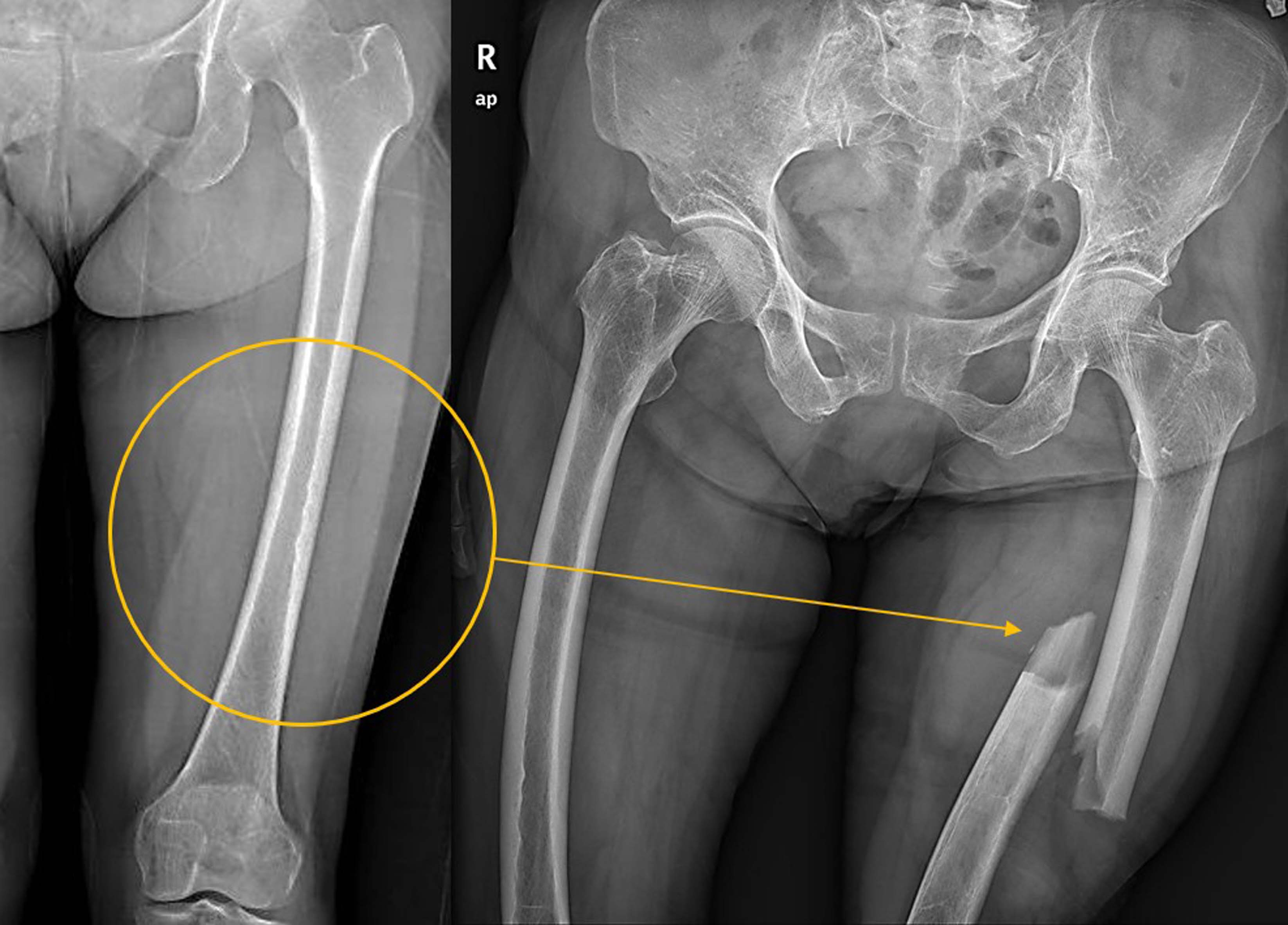Arch Hand Microsurg.
2022 Mar;27(1):1-11. 10.12790/ahm.21.0098.
Atypical forearm fractures associated with long-term bisphosphonate use: the perspective of hand surgeons
- Affiliations
-
- 1Department of Orthopedic Surgery, Chungnam National University School of Medicine, Daejeon, Korea
- 2Regional Rheumatoid and Degenerative Arthritis Center, Chungnam National University Hospital, Daejeon, Korea
- 3Department of Orthopedic Surgery, Konyang University Hospital, Konyang University College of Medicine, Daejeon, Korea
- 4Department of Orthopedic Surgery, Daejeon St. Mary’s Hospital, College of Medicine, The Catholic University of Korea, Daejeon, Korea
- 5Department of Orthopedic Surgery, Chungnam National University Sejong Hospital, Chungnam National University College of Medicine, Sejong, Korea
- KMID: 2526643
- DOI: http://doi.org/10.12790/ahm.21.0098
Abstract
- Bisphosphonates are widely used to treat osteoporosis, but atypical femoral fractures have emerged as a serious complication. Similar fractures of the forearm have been reported since 2010, and retrospective studies have revealed a number of details. Clinicians should remember that bisphosphonates can affect all bony structures in the body. When an atypical fracture is misdiagnosed as an ordinary fracture and treated with surgical fixation, unexpected nonunion may occur. Therefore, the authors would like to share our experiences from the perspective of hand surgeons.
Keyword
Figure
Reference
-
References
1. Langdahl BL, Libanati C, Crittenden DB, et al. Romosozumab (sclerostin monoclonal antibody) versus teriparatide in postmenopausal women with osteoporosis transitioning from oral bisphosphonate therapy: a randomised, open-label, phase 3 trial. Lancet. 2017; 390:1585–94.
Article2. Leder BZ, Tsai JN, Uihlein AV, et al. Denosumab and teriparatide transitions in postmenopausal osteoporosis (the DATA-Switch study): extension of a randomised controlled trial. Lancet. 2015; 386:1147–55.
Article3. Saag KG, Petersen J, Brandi ML, et al. Romosozumab or alendronate for fracture prevention in women with osteoporosis. N Engl J Med. 2017; 377:1417–27.
Article4. Martino S, Cauley JA, Barrett-Connor E, et al. Continuing outcomes relevant to Evista: breast cancer incidence in postmenopausal osteoporotic women in a randomized trial of raloxifene. J Natl Cancer Inst. 2004; 96:1751–61.
Article5. Black DM, Schwartz AV, Ensrud KE, et al. Effects of continuing or stopping alendronate after 5 years of treatment: the Fracture Intervention Trial Long-term Extension (FLEX): a randomized trial. JAMA. 2006; 296:2927–38.
Article6. Black DM, Reid IR, Boonen S, et al. The effect of 3 versus 6 years of zoledronic acid treatment of osteoporosis: a randomized extension to the HORIZON-Pivotal Fracture Trial (PFT). J Bone Miner Res. 2012; 27:243–54.
Article7. Black DM, Reid IR, Cauley JA, et al. The effect of 6 versus 9 years of zoledronic acid treatment in osteoporosis: a randomized second extension to the HORIZON-Pivotal Fracture Trial (PFT). J Bone Miner Res. 2015; 30:934–44.
Article8. Oh BH, Heo YM, Yi JW, Kim TG, Lee JS. Atypical fracture of the proximal shaft of the ulna associated with prolonged bisphosphonate therapy. Clin Orthop Surg. 2018; 10:389–92.
Article9. Tan SH, Saseendar S, Tan BH, Pawaskar A, Kumar VP. Ulnar fractures with bisphosphonate therapy: a systematic review of published case reports. Osteoporos Int. 2015; 26:421–9.
Article10. Parfitt AM. Targeted and nontargeted bone remodeling: relationship to basic multicellular unit origination and progression. Bone. 2002; 30:5–7.
Article11. Wenzel TE, Schaffler MB, Fyhrie DP. In vivo trabecular microcracks in human vertebral bone. Bone. 1996; 19:89–95.
Article12. Shane E, Burr D, Abrahamsen B, et al. Atypical subtrochanteric and diaphyseal femoral fractures: second report of a task force of the American Society for Bone and Mineral Research. J Bone Miner Res. 2014; 29:1–23.
Article13. Gong HS, Song CH, Lee YH, Rhee SH, Lee HJ, Baek GH. Early initiation of bisphosphonate does not affect healing and outcomes of volar plate fixation of osteoporotic distal radial fractures. J Bone Joint Surg Am. 2012; 94:1729–36.
Article14. Shin YH, Hong WK, Kim J, Gong HS. Osteoporosis care after distal radius fracture reduces subsequent hip or spine fractures: a 4-year longitudinal study. Osteoporos Int. 2020; 31:1471–6.
Article15. Jung HS, Jang S, Chung HY, et al. Incidence of subsequent osteoporotic fractures after distal radius fractures and mortality of the subsequent distal radius fractures: a retrospective analysis of claims data of the Korea National Health Insurance Service. Osteoporos Int. 2021; 32:293–9.
Article16. Daruwalla ZJ, Huq SS, Wong KL, et al. Hip fractures, preceding distal radius fractures and screening for osteoporosis: should we be screening earlier?: a minimum 10-year retrospective cohort study at a single centre. Osteoporos Int. 2016; 27:361–6.
Article17. Heo YM, Park SE, Cha SM, Shin HD, Choi JK. Diagnostic criteria and treatment of atypical ulnar fractures associated with prolonged bisphosphonate therapy: multicenter case analysis. J Hand Surg Am. 2021; Sep. 23. [Epub]. https://doi.org/10.1016/j.jhsa.2021.08.001.
Article18. Cha SM, Shin HD. Risk factors for atypical forearm fractures associated with bisphosphonate usage. Injury. 2021; 52:1423–8.
Article19. Adler RA. Update on rare adverse events from osteoporosis therapy and bisphosphonate drug holidays. Endocrinol Metab Clin North Am. 2021; 50:193–203.
Article20. Cha SM, Shin HD, Ahn BK. Revision osteosynthesis after primary treatment of atypical ulnar fractures associated with bisphosphonate usage: nonunion after ordinary open reduction and internal fixation. Arch Orthop Trauma Surg. 2021; 141:1855–62.
Article21. Mohan PC, Howe TS, Koh JS, Png MA. Radiographic features of multifocal endosteal thickening of the femur in patients on long-term bisphosphonate therapy. Eur Radiol. 2013; 23:222–7.
Article22. Osada R, Zukawa M, Kimura T. Atypical ulnar fracture associated with long-term bisphosphonate use. J Orthop Sci. 2015; 20:1132–5.
Article23. Moon J, Bither N, Lee T. Atypical forearm fractures associated with long-term use of bisphosphonate. Arch Orthop Trauma Surg. 2013; 133:889–92.
Article24. Yamamoto N, Yamauchi M, Noda T, Matsui Y, Ozaki T. Atypical ulnar fracture with atypical femoral fracture: a case report and literature review. J Orthop Sci. 2020; Mar. 23. [Epub]. https://doi.org/10.1016/j.jos.2020.02.014.
Article25. Ito H, Miyakoshi N, Kasukawa Y, et al. Treatment of atypical fracture of the ulnar diaphysis by open reduction and internal fixation with teriparatide. Case Rep Orthop. 2019; 2019:9103412.
Article26. Shimada Y, Ishikawa T, Endo J, et al. Treatment of atypical ulnar fractures associated with long-term bisphosphonate therapy for osteoporosis: autogenous bone graft with internal fixation. Case Rep Orthop. 2017; 2017:8602573.
Article27. Yam MG, Kwek EB. A case of bilateral atypical ulnar fractures with bisphosphonate therapy in a walking aided elderly. Ann Acad Med Singap. 2017; 46:351–3.
Article28. Erdem Y, Atbasi Z, Emre TY, Kavadar G, Demiralp B. Effect of long-term use of bisphosphonates on forearm bone: atypical ulna fractures in elderly woman with osteoporosis. Case Rep Orthop. 2016; 2016:4185202.
Article29. Chiang GS, Koh KW, Chong TW, Tan BY. Stress fracture of the ulna associated with bisphosphonate therapy and use of walking aid. Osteoporos Int. 2014; 25:2151–4.
Article30. Ang BF, Koh JS, Ng AC, Howe TS. Bilateral ulna fractures associated with bisphosphonate therapy. Osteoporos Int. 2013; 24:1523–5.
Article31. Stathopoulos KD, Kosmidis C, Lyritis GP. Atypical fractures of the femur and ulna and complications of fracture healing in a 76-year-old woman with Sjögren’s syndrome. J Musculoskelet Neuronal Interact. 2011; 11:208–11.32. Tang ZH, Kumar VP. Alendronate-associated ulnar and tibial fractures: a case report. J Orthop Surg (Hong Kong). 2011; 19:370–2.
Article33. Bjørgul K, Reigstad A. Atypical fracture of the ulna associated with alendronate use. Acta Orthop. 2011; 82:761–3.
Article34. Ohta S, Ikeguchi R, Noguchi T, Kaizawa Y, Matsuda S. Intractable fractures of the bilateral proximal ulnae after 8 years of zoledronate treatment for breast cancer bone metastasis. J Hand Surg Am. 2021; Apr. 9. [Epub]. https://doi.org/10.1016/j.jhsa.2021.02.012.
Article35. Watts NB, Camacho PM, Lewiecki EM, Petak SM; AACE/ACE Postmenopausal Osteoporosis Guidelines Task Force. American Association of Clinical Endocrinologists/American College of Endocrinology Clinical Practice Guidelines for the diagnosis and treatment of postmenopausal osteoporosis: 2020 update. Endocr Pract. 2021; 27:379–80.36. Jiang SY, Kaufman DJ, Chien BY, Longoria M, Shachter R, Bishop JA. Prophylactic fixation can be cost-effective in preventing a contralateral bisphosphonate-associated femur fracture. Clin Orthop Relat Res. 2019; 477:480–90.
Article
- Full Text Links
- Actions
-
Cited
- CITED
-
- Close
- Share
- Similar articles
-
- Atypical Fracture of the Proximal Shaft of the Ulna Associated with Prolonged Bisphosphonate Therapy
- Epidemiology and Clinical Features of Atypical Femoral Fractures
- Atypical Fracture of the Ulna Associated with 3 Years of Bisphosphonate Medication
- Treatment of Atypical Ulnar Fracture Associated with Bisphosphonate Therapy - A Case Report -
- A Case Report of Long-Term Bisphosphonate Therapy and Atypical Stress Fracture of Bilateral Femur

